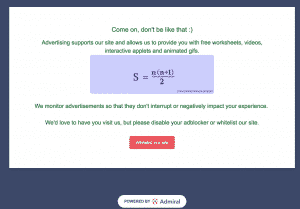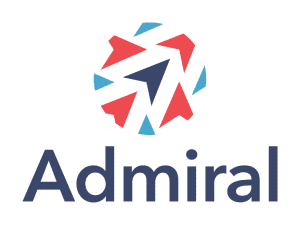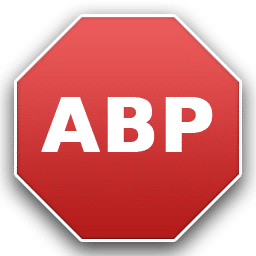
 Recently, a post on the Adguard blog caused something of a panic in the ad blocking community. The headline read: Ad Blocking is Under Attack
Recently, a post on the Adguard blog caused something of a panic in the ad blocking community. The headline read: Ad Blocking is Under Attack
It had all of the hallmarks of a full-scale attack on the concept of ad blocking. An anti-ad blocking company named Admiral was using a Digital Millennium Copyright Act (DMCA) notice to remove a domain from a list used by the majority of ad blockers.
This caused a strong response from the tech community, including claims that Admiral had perjured itself and that there was no way a URL was copyright protected, therefore making the DMCA false.
However, as more details emerged, it became clear the case wasn’t so cut and dry. It was likely that the domain shouldn’t have been on EasyList in the first place and that Admiral’s actions, while still controversial, were not as outrageous as they seemed.
With that in mind, let’s take a look at the exact chain of events and understand various legal issues at play in this story.
Admiral vs. EasyList
 Admiral is a company that helps publishers revenue lost through ad blocking. It does this via a variety of means including a popup that requires users to disable their ad blocker to read the content on the page.
Admiral is a company that helps publishers revenue lost through ad blocking. It does this via a variety of means including a popup that requires users to disable their ad blocker to read the content on the page.
Apparently, much of that particular service is provided through domain functionalclaim.com.
To be clear, the domain is not itself an ad server. Instead, it’s the domain from which Admiral’s software works to detect users who are engaged in ad blocking and then take an action against them. This, in many cases, means locking them out of the site until they whitelist the publisher.
According to Admiral, on July 9, 2017 EasyList added the domain to their list of ad servers. Though EasyList was originally designed for use with Adblock, it’s a very popular list that’s used by the majority of ad blocking applications, including Adguard.
Also according to Admiral, they contacted EasyList repeatedly, including a comment on a comment on the commit that saw the domain get added.
After that failed to get the URL removed, Admiral says they were forced to file the DMCA notice, which they did on August 1, 2017. The notice, filed with GitHub, resulted in the removal of the domain. Nine Days later, on August 10, 2017, Adguard noticed the change and wrote about it on their blog, which prompted Admiral’s response the next day.
But what makes the situation confusing is that, while we’re used to seeing the DMCA invoked for piracy or internet plagiarism, this is a case that involved a URL. This begged a simple question: How can a simple URL be infringing?
Admiral’s Arguments
 One of the confusing issues with this story is that the DMCA is actually invoked twice.
One of the confusing issues with this story is that the DMCA is actually invoked twice.
The first is the notice and takedown system that Admiral used to get the URL removed (Section 512). The second is the anti-circumvention rules, which is why Admiral says the URL was infringing (Section 1201).
That second section says it pretty bluntly in (a)(1)(A):
No person shall circumvent a technological measure that effectively controls access to a work protected under this title.
It goes on to say in (b) that:
No person shall manufacture, import, offer to the public, provide, or otherwise traffic in any technology, product, service, device, component, or part thereof, that… is primarily designed or produced for the purpose of circumventing protection afforded by a technological measure that effectively protects a right of a copyright owner under this title in a work or a portion thereof.
In short, it is illegal to both circumvention and technological measure that controls access to a work or to create/own tools for that purpose. Doing either is considered a copyright infringement.
The argument that Admiral is making is that, by including the domain, EasyList was essentially circumventing their DRM, making it a violation of the law. Because of that, EasyList was a copyright infringement and they were forced to submit a DMCA notice as per GitHub’s policies.
Admiral notes, correctly, that they targeted the notice carefully. Being very clear that the issue wasn’t the entire document, just the one domain.
But is Admiral right? That’s a much thornier question for a lot of reasons.
Can Ad Blocking Become Circumvention?
 To be clear in this conversation, we’re not talking about ad blocking itself. We’re talking about the use of ad blocking technology to circumvent sites that restrict access to ad blockers.
To be clear in this conversation, we’re not talking about ad blocking itself. We’re talking about the use of ad blocking technology to circumvent sites that restrict access to ad blockers.
Unfortunately for this analysis, there is no case history here that I can find. This is simply a theory that hasn’t been tested in court in this context.
However, anti-ad blocking tools are certainly adamant that it is the case. BlockAdblock has a very lengthy post about this issue and Admiral also believes in it strongly, even calling the its service a “DMCA copyright access control platform”.
Looking at the legal code, Admiral and others do have a strong argument. There’s no doubt that a website is a copyrighted work and that their products do provide a technological measure that restricts access to it.
Furthermore, the law doesn’t place any requirement that the protection be a strong one. DVD encryption is notoriously easy to break, but it’s still illegal except in cases specifically exempted by the Librarian of Congress. Furthermore, there’s no such exemption for this kind of circumvention.
What that means is that a user circumventing and attempt to lock out ad blockers likely committing copyright infringement, just as one who rips a DVD is.
However, does that make the software itself infringing? That gets a bit thornier.
Going back to the relevant passage, the law says it is unlawful to create a tool that:
is primarily designed or produced for the purpose of circumventing a technological measure that effectively controls access to a work protected under this title;
The word primarily is a problem here. Ad blocking software is not primarily for the purpose of circumventing tools that block ad blockers. They’re primarily for blocking ads. Proof of this is that has tens of thousands of entries. Admiral’s DMCA notice removed just one.
When we see this section used against satellite descramblers, modded game consoles and DVD copying software, things clearly used almost exclusively for circumventing technical measures.
One case that does seem relevant is the 2005 case between Agfa Monotype and Adobe. In that case, Agfa accused Adobe for Acrobat 5.0’s FreeText and Forms tools, which allowed “editable embedding” of fonts Agfa said was protected from copying and manipulation.
The court, however, disagreed and found that Adobe Acrobat was not primarily designed for the purpose of circumventing the protection on fonts.
While there were other issues in this case, including questions about how effective Agfa’s protection was, it does show that courts at least require an application to be primarily for the purpose of circumvention to be infringing.
Despite that, it’s very difficult to predict what a court might say if this case came before it. We just haven’t really seen an application of the law that’s directly comparable and there are several differences between the Agfa case and the Admiral one.
The truth is, we’ll probably never really know the answer here, but what is clear is that the issue is more complicated than either side wants to make it seem.
Bottom Line
In the end, this particular issue is resolved. The developers at EasyList have admitted that the domain shouldn’t have been included in the firstplace, saying in a comment, “If it is a Circumvention/Adblock-Warning adhost, it should be removed from Easylist even without the need for a DMCA request.”
Without a court ruling or a targeted law that really covers this, it’s probably wise for ad blockers to stay out of this gray area and simply avoid circumventing such systems. Litigation, though unlikely, is both an expensive and uncertain endeavor.
Though users can and likely will add the domains themselves, that is their liability and their risk to take. Ad blockers would be wise to avoid any and all potential DMCA liability by avoiding circumventing these tools.
Still, the issue is far from cut and dry and, realistically, without a more pointed court ruling, we’re really not going to know the answers. This was simply not a use of the law that was envisioned and clearly written in.
As with many things in copyright, this is a difficult issue without any clear answers.
Want to Reuse or Republish this Content?
If you want to feature this article in your site, classroom or elsewhere, just let us know! We usually grant permission within 24 hours.